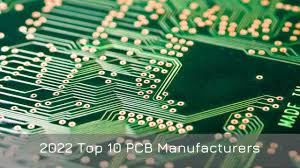Vias are an essential building of the world of printed circuit board (PCB) design that is intricate but no less important to the functionality and integrity of your board. A via is a small hole in the PCB that is plated or filled with metal, allowing electrical connections between different layers of the PCB. Anyone involved in PCB design and manufacturing will need to know the types of PCB vias, their functions, and the design considerations that come with each.
Types of PCB Vias
Through-Hole Vias: The most common type of vias extend through the entire PCB, from the top layer to the bottom layer. These are generally employed in case of thicker PCBs passing connections through multiple layers. Through-hole vias can have diameters between 0.2 mm and 1.0 mm depending on the board design requirements.
Blind Vias: These vias connect the outer layer of the PCB to one or more inner layers but do not go completely through the board. This via type is saved PCB land area, having more space for a part or trace routing. Blind Vias (micro vias) are usually smaller in diameter, ranging from 0.1 to 0.2 mm in diameter
Internal Layers: These are inner layer vias which are not surface visible. These are widely used to complex PCBs of multiple layers that aids to handle the space better and improves the electrical performance by shortening the electrical path. Similar diameters to those of blind vias

Functionality of PCB Vias
Electrical Connectivity - Vias mostly function as the path through which an electric signal flows from one layer of a PCB to the other. The topology is important in multi-layer PCBs where physical space is limited and signal integrity is a key factor.
Heat Dissipation: Vias are also important when it comes to thermal management. Thermal Vias - These are a type of copper-plated hole (i.e., a via) added to enable heat baring components to transfer heat with the PCB. By connecting thermal vias with a normally sized copper plane or Pad.
Improved Signal Integrity: High-frequency designs benefit from vias that reduce the loop area and thus minimize electromagnetic interference (EMI) and radio frequency interference (RFI). Designers use such vias for improving high-speed circuit performance by strategically placing vias at specific locations.
Design Considerations
Areas Where Via: The dimensions and locations of vias can have substantial effects on PCB performance. Bigger vias offer lower resistance, for a faster current flow, but smaller trace widths, at the expense of taking more space on the board. However, smaller vias can save space, but also might increase their resistance and inductance.
Aspect Ratio-The aspect ratio, defined as the ratio of the depth of a via to its diameter, is a significant aspect of PCB design. A good aspect ratio is usually 6:1 or lower At higher ratios, it could create a headache for manufacture and reliability.
Cost Impact: The cost of manufacturing the PCB can increase as extra processes are required to make blind or buried vias. The trade-off is performance much improved compared to mechanical disks, but at a price.
PCB vias are what make modern circuit boards so versatile and complex, so alone they are indispensable components of our PCBs today. They help in achieving electrical and thermal connectivity from one layer to another in a device providing for newer functionalities LED on PCB. To learn all about vias and their applications in PCB design, visit PCB Vias Explained. As a seasoned PCB designer or a beginner in the industry, understanding vias is an essential part of the design process and will help to improve the quality of your designs and, ultimately, your final electronics products.